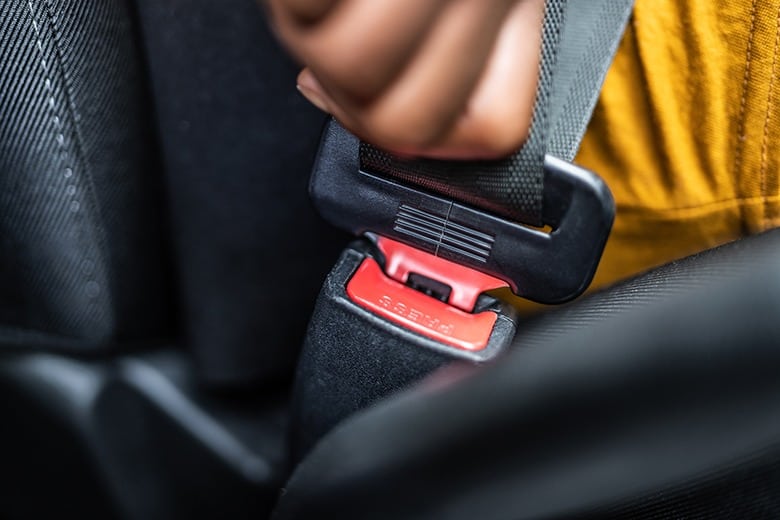It is well understood that wearing a seat belt is the best step you can take to protect yourself in case of a car accident.
North Carolina requires all passengers age 16 and older to wear seat belts and addresses children less than age 16 with the NC child passenger safety law. South Carolina requires all passengers age 17 and younger to wear set belts.
Still, many people do not regularly wear seat belts. A recent report from the National Highway Traffic Safety Administration says the national seat belt use rate in 2013 was 87 percent, up slightly from 86 percent in 2012. This, says the NHTSA, is a substantial increase from 58 percent in 1994.
Despite the statistical increase in seatbelt use, far too many people are still not buckling up.
The NHTSA says that of 21,132 passenger vehicle occupants killed in accidents in 2013, 9,777 (46 percent) were known to be restrained by seat belts. Forty-nine percent of passenger vehicle occupants killed in 2013 were unrestrained. (Restraint use was not known for 1,775, or 8.3 percent, of the occupants.)
Seat belts saved an estimated 12,584 lives among passenger vehicle occupants age 5 and older in 2013, NHTSA says. If all passenger vehicle occupants age 5 and older had worn seat belts that year, an additional 2,800 lives could have been saved, NHTSA believes.
The federal agency says it estimates that lap/shoulder seat belts, when used, reduce the risk of fatal injury to front-seat passenger car occupants by 45 percent and the risk of moderate-to-critical injury by 50 percent.
In North Carolina in 2013, of 871 people killed in motor vehicle accidents, 453 (52 percent) were restrained, 355 (41 percent) were not and for 63 of those killed (7 percent) their seat belt use could not be determined. In South Carolina, of 488 people killed in car accidents, 214 (44 percent) were wearing seat belts and 242 (50 percent) were not. For 32 people (7 percent), their seat belt use could not be determined.
Seat belts keep occupants from being ejected from the vehicle in a car accident, which NHTSA calls “one of the most injurious events that can happen to a person in a crash.”
In fatal crashes in 2013, 79 percent of passenger vehicle occupants who were totally ejected from their vehicles were killed. However, only 1 percent of car occupants reported to have been using seat and lap belts were totally ejected from their vehicles, compared with 31 percent of unrestrained vehicle occupants.
The report’s numbers also profile who does and doesn’t wear seat belts. Among male drivers killed in crashes, 54 percent were not wearing seat belts (among those where use was known). Among female drivers fatally injured in wrecks, 41 percent were unrestrained.
Also among those in motor vehicle fatalities in 2013:
61 percent of pickup truck drivers were unrestrained
55 percent of SUV drivers were unrestrained
45 percent of van drivers were unrestrained
43 percent of passenger car drivers were unrestrained.
The indication, we believe, is that drivers think – falsely – that their larger vehicles will protect them.
“It’s simple: seat belts save lives,” U.S. Transportation Secretary Anthony Foxx said upon release of the report earlier this year. “Thousands of Americans are alive today because they were wearing theirs during a crash. But thousands more would be with us if they had buckled up, and we will continue to urge every driver and passenger to use a seat belt.”
In a separate report, NHTSA said the seat belt usage rate in 2014 was 90.6 percent in North Carolina and 90 percent in South Carolina. Nationwide, the rate is 87 percent. Only 19 states and Washington, D.C. have achieved seat belt use rates of 90 percent or better.
At Grimes Teich Anderson, we urge all of our friends in North and South Carolina to put on their seatbelts every time they get into the car.

